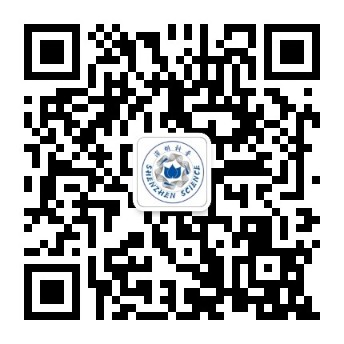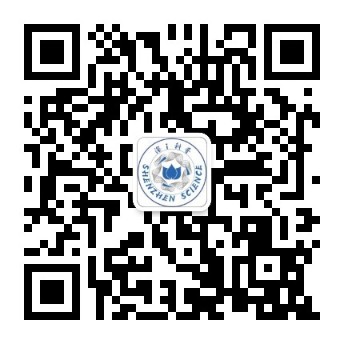音频科普:量具可以衡量药品,还能弹奏音阶
音频科普:量具可以衡量药品,还能弹奏音阶
Researchers have designed a musical instrument that can detect counterfeit drugs by the pitch of its notes.研究者设计了一种乐器,可以通过其演奏出来的音调检测出假药。
撰文\播音:克里斯托弗·因塔利亚塔(Christopher Intagliata)
翻译:陈美娟
审校:许楠
You probably don't think of scientific or medical instruments as the kind of instruments that actually make music. But now researchers have built a scientific instrument specifically designed to detect counterfeit medications through sound. <>
你可能不会把科学或者医疗用具用作乐器。但现有研究者制造了一种科学用具,能够通过演奏声音检测出假药。(声音样例)
"Someone even made the comparison that we're making a scale in the sense that it measures mass, you know, but it also plays scales in the sense it makes musical notes!" William Grover, a bioengineer at U.C. Riverside.
“有些人甚至打了个比方:就像在用天平测量物体质量的同时还用它弹奏音符!”来自加州大学河滨分校的生物工程学家威廉·格罗弗说道。
He and his team took inspiration from the African musical instrument called the mbira. It has metal tines, which resonate over a small wooden board when you pluck them. <>
他的团队从一种叫安比拉琴的非洲乐器上得到灵感。这种琴上有金属齿,拨弄的时候木质琴板上有回声。(安比拉琴声)
Instead of tines, Grover's instrument uses a hollow metal tube. Load a sample of medication inside, and it changes the tone of the instrument. "A sample that's dense creates a lower note. A sample that's less dense creates a higher note, in terms of pitch."
格罗弗团队的乐器使用中空金属管来替代金属齿。将药品样本放入后,会改变乐器的音调。“密度大的药品导致音调更低。密度不那么大的药品的音调更高。”
For example, here's the tube with air inside: <>
例如,这是管中充了气的声音:(充气音样)。
Here it is again, with water inside: <> It's denser, so the pitch is lower.
这是加了水之后的声音:(加水音样)。谁的密度更大,音调就更低。
The World Health Organization reckons about 10 percent of the medications in low and middle-income countries are fakes. Sometimes, dangerous ones. So the idea here is to fill the tube with a sample that's known to be safe—cough syrup from a reputable source, for example. Then compare it to a bottle you're not so sure about.
据世卫组织统计,中低收入国家中10%的药品都是假药,有时会导致严重后果。因此他们想要将安全的药品——例如来源可靠的止咳糖浆,填充在管道中,然后将不确信真伪的药品与之进行比较。
"If you get the same pitch out of those two samples, it's very good evidence that they're probably the same material, and the suspect substance is a safe drug to take. But if you get a different pitch out of the two samples that's absolute proof that those two samples are chemically different. And that shows you there's something wrong with the sample you were given and you probably shouldn't take it."
“如果这两种样品得到的音调相同,这就能很好的证明它们用料相同,这种不确定的药物是安全的,能够放心使用。但如果得到不同的音调,这就一定能证明这两种样本化学成分不同,这表明样本来源有问题,不应使用。”
The instrument is designed to test only liquid samples for now. And while the human ear is sensitive enough to hear the difference between samples of air and water, the difference between a real and a counterfeit drug might be imperceptible to our ears. So Grover built a free website where users can upload recordings of the instrument, from their smartphone or computer, and analyze the hertz. Then repeat it with the suspect sample.
目前这种仪器只能用于检测液体样本。尽管人耳能够灵敏的鉴别空气和水样本的音样,但我们还是无法区分真药和假药音样的细微差别。因此格罗弗创立了一个网站,以供用户用手机或者电脑下载仪器记录的声音并且分析其赫兹高低,然后再与可疑样本进行对比。
The researchers published the work in an open-access journal called ACS Omega… [Heran C. Bhakta et al., Musical Instruments As Sensors]
研究者将这项工作发表在美国化学学会的“欧米茄”(Omega)子刊开源杂志上。
...in hopes of inspiring people around the world to build these things themselves. "I can literally make one of these out of junk in your garage in about five minutes probably. The hardest thing to come by is tubing. We've made them out of bent copper tubing like you get out of a radiator. Just junk, lying around. It's remarkable how easy they are to make. My dream would be to have the instructions for making them and using them shared as widely as possible."
……希望能启发世界各地的人们自己创建这样的样本。“我可以在五分钟内用你们车库里的垃圾造一个这样的仪器出来。最难的是把它弄成管状。我们已经能够利用散热器里的弯铜管做出这种仪器了。制作过程非常非常简单,仅仅用身边的垃圾就可以了。我希望可以有一个制作指南,然后将之最大范围地投入使用。”
It is, admittedly, a pretty convincing pitch.
毫无疑问,这种仪器发出的音调相当有说服力。
关注【深圳科普】微信公众号,在对话框:
回复【最新活动】,了解近期科普活动
回复【科普行】,了解最新深圳科普行活动
回复【研学营】,了解最新科普研学营
回复【科普课堂】,了解最新科普课堂
回复【科普书籍】,了解最新科普书籍
回复【团体定制】,了解最新团体定制活动
回复【科普基地】,了解深圳科普基地详情
回复【观鸟知识】,学习观鸟相关科普知识
回复【博物学院】,了解更多博物学院活动详情
Researchers have designed a musical instrument that can detect counterfeit drugs by the pitch of its notes.研究者设计了一种乐器,可以通过其演奏出来的音调检测出假药。
撰文\播音:克里斯托弗·因塔利亚塔(Christopher Intagliata)
翻译:陈美娟
审校:许楠
You probably don't think of scientific or medical instruments as the kind of instruments that actually make music. But now researchers have built a scientific instrument specifically designed to detect counterfeit medications through sound. <
你可能不会把科学或者医疗用具用作乐器。但现有研究者制造了一种科学用具,能够通过演奏声音检测出假药。(声音样例)
"Someone even made the comparison that we're making a scale in the sense that it measures mass, you know, but it also plays scales in the sense it makes musical notes!" William Grover, a bioengineer at U.C. Riverside.
“有些人甚至打了个比方:就像在用天平测量物体质量的同时还用它弹奏音符!”来自加州大学河滨分校的生物工程学家威廉·格罗弗说道。
He and his team took inspiration from the African musical instrument called the mbira. It has metal tines, which resonate over a small wooden board when you pluck them. <
他的团队从一种叫安比拉琴的非洲乐器上得到灵感。这种琴上有金属齿,拨弄的时候木质琴板上有回声。(安比拉琴声)
Instead of tines, Grover's instrument uses a hollow metal tube. Load a sample of medication inside, and it changes the tone of the instrument. "A sample that's dense creates a lower note. A sample that's less dense creates a higher note, in terms of pitch."
格罗弗团队的乐器使用中空金属管来替代金属齿。将药品样本放入后,会改变乐器的音调。“密度大的药品导致音调更低。密度不那么大的药品的音调更高。”
For example, here's the tube with air inside: <
例如,这是管中充了气的声音:(充气音样)。
Here it is again, with water inside: <
这是加了水之后的声音:(加水音样)。谁的密度更大,音调就更低。
The World Health Organization reckons about 10 percent of the medications in low and middle-income countries are fakes. Sometimes, dangerous ones. So the idea here is to fill the tube with a sample that's known to be safe—cough syrup from a reputable source, for example. Then compare it to a bottle you're not so sure about.
据世卫组织统计,中低收入国家中10%的药品都是假药,有时会导致严重后果。因此他们想要将安全的药品——例如来源可靠的止咳糖浆,填充在管道中,然后将不确信真伪的药品与之进行比较。
"If you get the same pitch out of those two samples, it's very good evidence that they're probably the same material, and the suspect substance is a safe drug to take. But if you get a different pitch out of the two samples that's absolute proof that those two samples are chemically different. And that shows you there's something wrong with the sample you were given and you probably shouldn't take it."
“如果这两种样品得到的音调相同,这就能很好的证明它们用料相同,这种不确定的药物是安全的,能够放心使用。但如果得到不同的音调,这就一定能证明这两种样本化学成分不同,这表明样本来源有问题,不应使用。”
The instrument is designed to test only liquid samples for now. And while the human ear is sensitive enough to hear the difference between samples of air and water, the difference between a real and a counterfeit drug might be imperceptible to our ears. So Grover built a free website where users can upload recordings of the instrument, from their smartphone or computer, and analyze the hertz. Then repeat it with the suspect sample.
目前这种仪器只能用于检测液体样本。尽管人耳能够灵敏的鉴别空气和水样本的音样,但我们还是无法区分真药和假药音样的细微差别。因此格罗弗创立了一个网站,以供用户用手机或者电脑下载仪器记录的声音并且分析其赫兹高低,然后再与可疑样本进行对比。
The researchers published the work in an open-access journal called ACS Omega… [Heran C. Bhakta et al., Musical Instruments As Sensors]
研究者将这项工作发表在美国化学学会的“欧米茄”(Omega)子刊开源杂志上。
...in hopes of inspiring people around the world to build these things themselves. "I can literally make one of these out of junk in your garage in about five minutes probably. The hardest thing to come by is tubing. We've made them out of bent copper tubing like you get out of a radiator. Just junk, lying around. It's remarkable how easy they are to make. My dream would be to have the instructions for making them and using them shared as widely as possible."
……希望能启发世界各地的人们自己创建这样的样本。“我可以在五分钟内用你们车库里的垃圾造一个这样的仪器出来。最难的是把它弄成管状。我们已经能够利用散热器里的弯铜管做出这种仪器了。制作过程非常非常简单,仅仅用身边的垃圾就可以了。我希望可以有一个制作指南,然后将之最大范围地投入使用。”
It is, admittedly, a pretty convincing pitch.
毫无疑问,这种仪器发出的音调相当有说服力。
关注【深圳科普】微信公众号,在对话框:
回复【最新活动】,了解近期科普活动
回复【科普行】,了解最新深圳科普行活动
回复【研学营】,了解最新科普研学营
回复【科普课堂】,了解最新科普课堂
回复【科普书籍】,了解最新科普书籍
回复【团体定制】,了解最新团体定制活动
回复【科普基地】,了解深圳科普基地详情
回复【观鸟知识】,学习观鸟相关科普知识
回复【博物学院】,了解更多博物学院活动详情

做科普,我们是认真的!
扫描关注深i科普公众号
加入科普活动群

- 参加最新科普活动
- 认识科普小朋友
- 成为科学小记者
下一篇:音频科普:从空中俯瞰古代文明
 会员登录
会员登录
















 深圳市宝安区国际会展中心20号馆
深圳市宝安区国际会展中心20号馆







